Welcome back.
In this week’s magazine, we look at the country’s – indeed much of the developed world’s – labour shortage and what it means. As Philip Pilkington argues, chronic labour shortages caused by people’s fears of returning to work and hesitancy in getting vaccinated means rising wages - and that in turn could mean spiralling inflation. We’ve seen this sort of thing before, he says – in the 1970s. “The dynamics this time are different”, he says, but “investors should beware”. He explains the best ways to protect your portfolio – if you’re not already a subscriber, sign up here and get your first six issues free.
This week’s “Too Embarrassed To Ask” video explains what a marginal tax rate is. A surprising number of people are flummoxed by this apparently simple concept. Find out exactly what it means here.
MoneyWeek
Subscribe to MoneyWeek today and get your first six magazine issues absolutely FREE

Sign up to Money Morning
Don't miss the latest investment and personal finances news, market analysis, plus money-saving tips with our free twice-daily newsletter
Don't miss the latest investment and personal finances news, market analysis, plus money-saving tips with our free twice-daily newsletter
And in this week’s podcast, Merryn’s joined by Kieran Heinman, author of Playing The Market: Retail Investment And Speculation In 20th Century Britain. Listen to the episode here.
Here are the links for this week’s editions of Money Morning and other web articles you may have missed:
- Monday Money Morning: Fund managers are good at buying shares – but terrible at selling them
- Tuesday Money Morning: The UK jobs market is booming – what does that mean for investors?
- Merryn’s blog: The times may be changing, but don’t change how you invest
- Thursday Money Morning: What really causes inflation? Here’s what prices since 1970 tell us
- Web article: Why are energy prices going up so much, and what does it mean for consumers and investors?
- Friday Money Morning: Why it pays to face up to your investment mistakes
- Cryptocurrency roundup: Litecoin blunder, cardano update and bitcoin mining in Laos
Now for the charts of the week.
The charts that matter
Gold saw a big fall as US economic data came in stronger than expected (if markets think that rates will go up sooner as a result of stronger economic data, then all else being equal, that’s not good for gold).
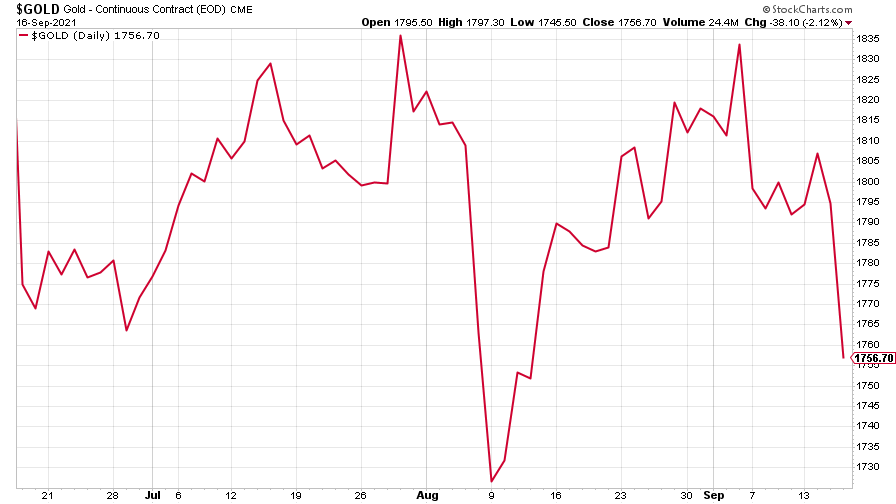
(Gold: three months)
The US dollar index (DXY – a measure of the strength of the dollar against a basket of the currencies of its major trading partners) edged higher.
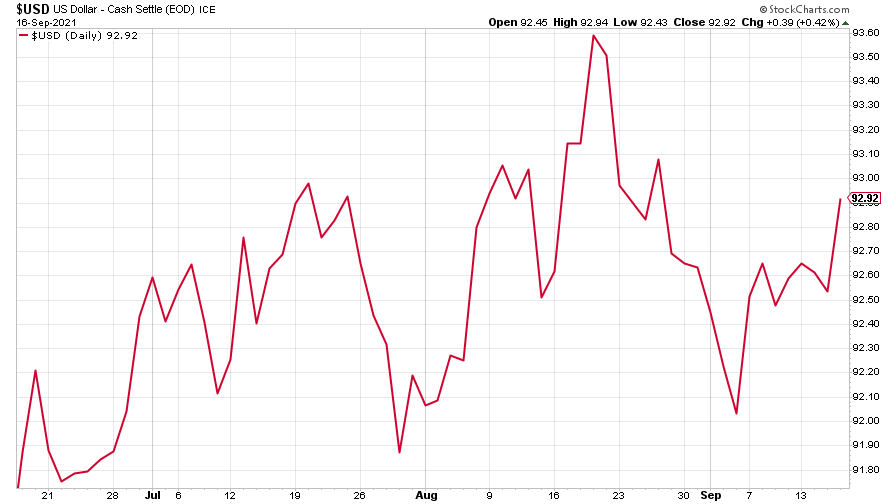
(DXY: three months)
The Chinese yuan (or renminbi) looked to be gaining strength (when the red line is rising, the dollar is strengthening while the yuan is weakening).
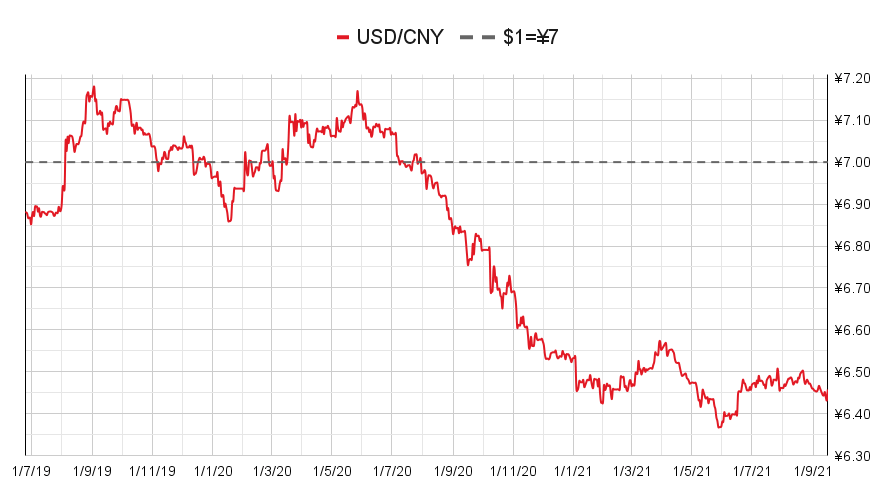
(Chinese yuan to the US dollar: since 25 Jun 2019)
The yield on the ten-year US government bond changed little this week.
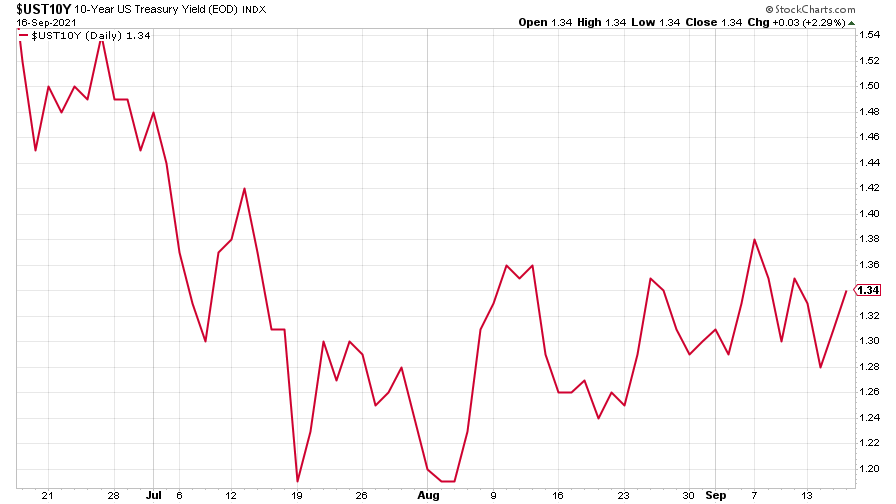
(Ten-year US Treasury yield: three months)
The yield on the Japanese ten-year bond recovered after an earlier slip.
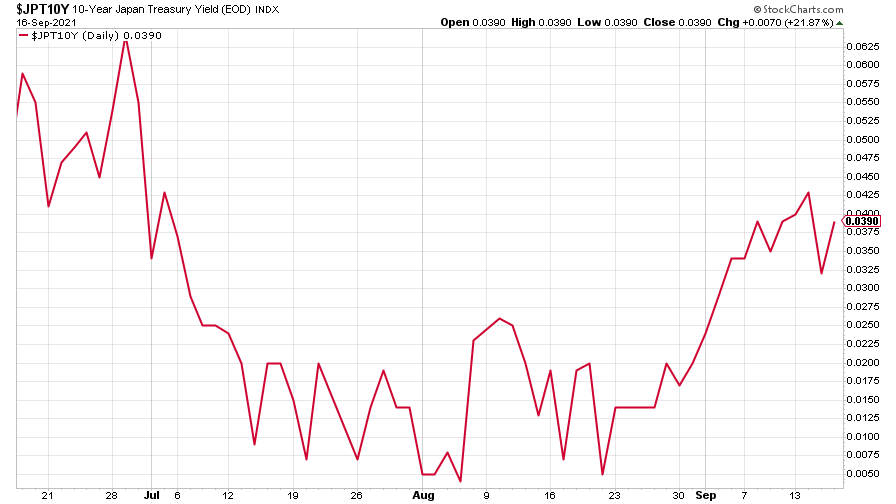
(Ten-year Japanese government bond yield: three months)
And the yield on the ten-year German Bund continued its gradual rise.
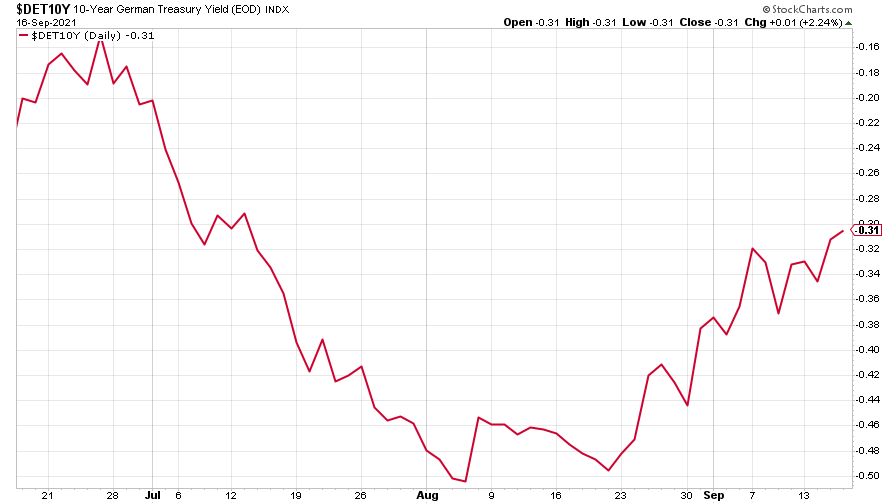
(Ten-year Bund yield: three months)
Copper saw very little action – climbing a little only to fall back.
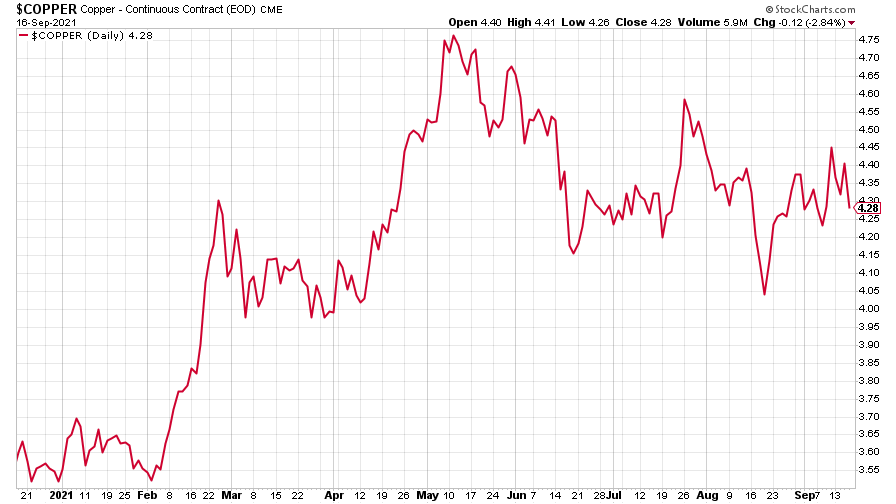
(Copper: nine months)
The closely-related Aussie dollar fell back.
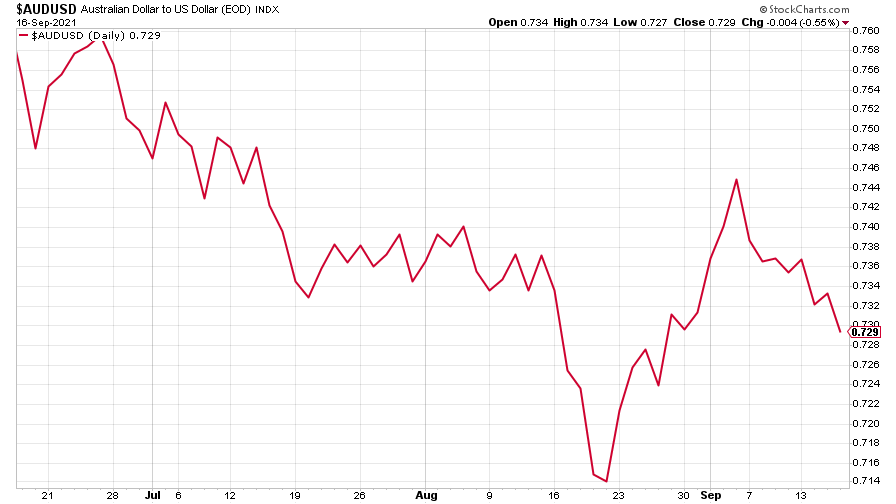
(Aussie dollar vs US dollar exchange rate: three months)
Bitcoin recovered somewhat from last week’s big fall.
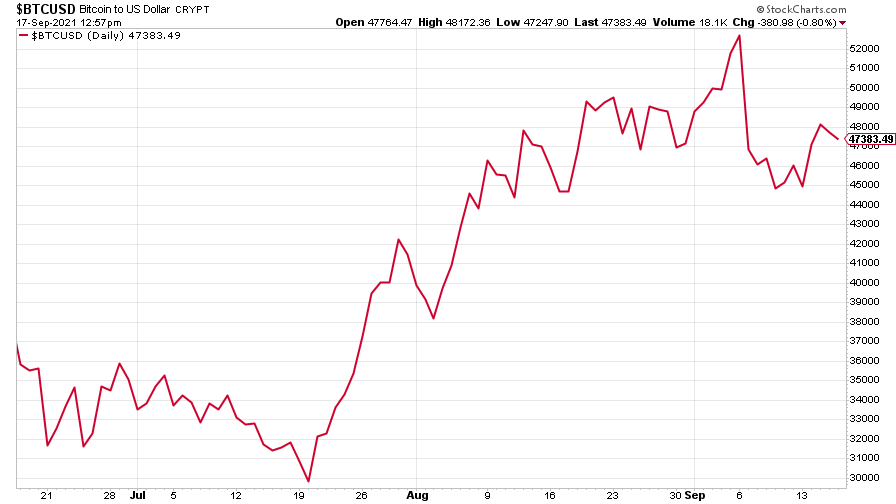
(Bitcoin: three months)
US weekly initial jobless claims rose by 20,000 to 332,000. The four-week moving average fell by 4,250 to 335,750.
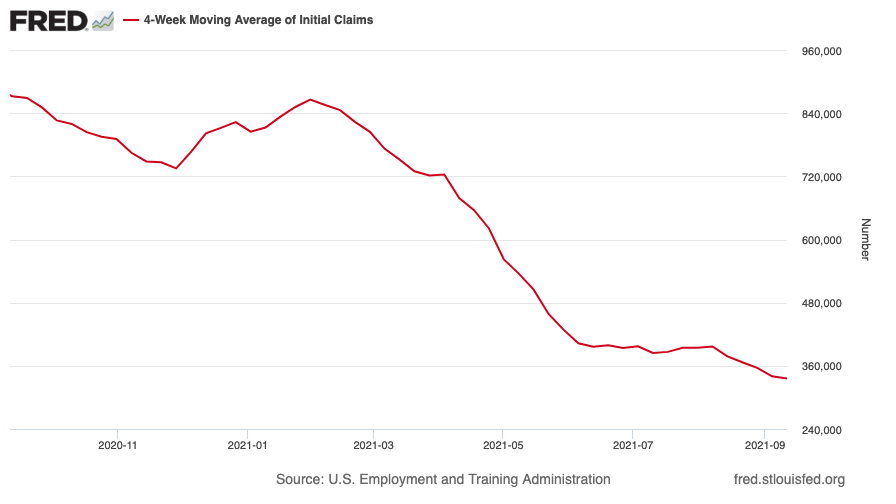
(US initial jobless claims, four-week moving average: since Jan 2020)
The oil price headed back over $75 a barrel.

(Brent crude oil: three months)
Amazon fell a little further, despite a rally towards the end of the week.
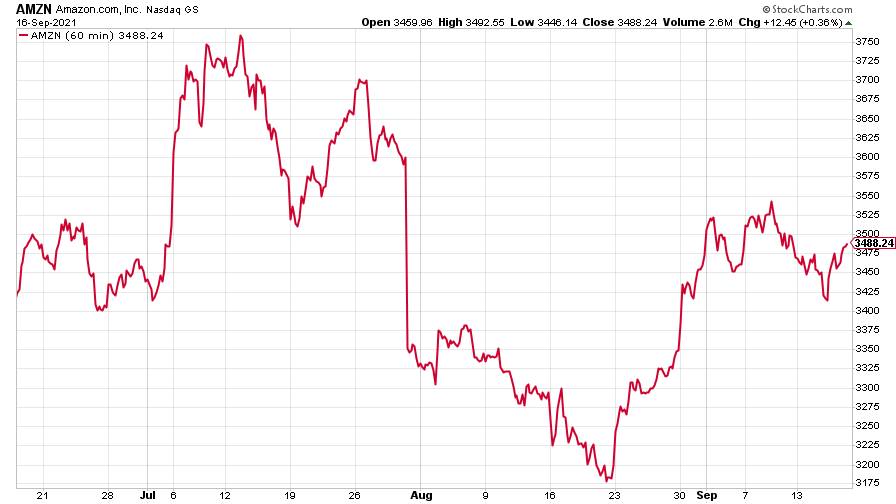
(Amazon: three months)
Tesla looked to be heading for a fall, then regained most of its losses.
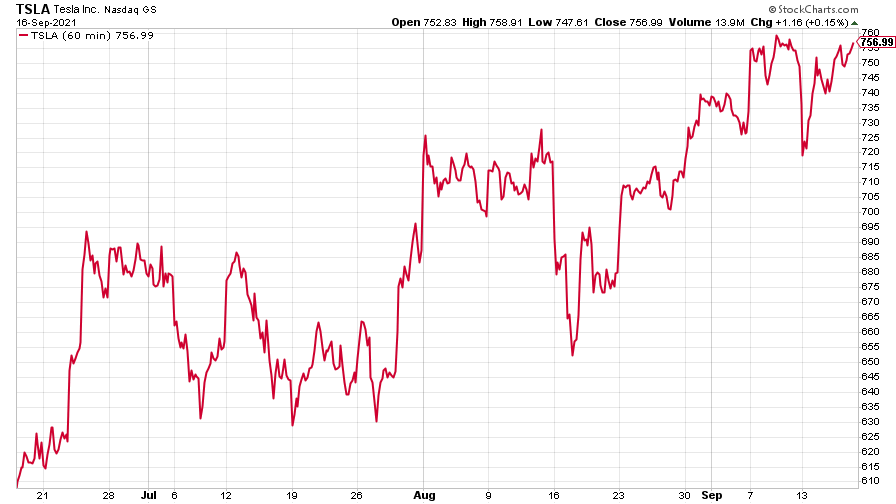
(Tesla: three months)
Have a great weekend.
Get the latest financial news, insights and expert analysis from our award-winning MoneyWeek team, to help you understand what really matters when it comes to your finances.
Ben studied modern languages at London University's Queen Mary College. After dabbling unhappily in local government finance for a while, he went to work for The Scotsman newspaper in Edinburgh. The launch of the paper's website, scotsman.com, in the early years of the dotcom craze, saw Ben move online to manage the Business and Motors channels before becoming deputy editor with responsibility for all aspects of online production for The Scotsman, Scotland on Sunday and the Edinburgh Evening News websites, along with the papers' Edinburgh Festivals website.
Ben joined MoneyWeek as website editor in 2008, just as the Great Financial Crisis was brewing. He has written extensively for the website and magazine, with a particular emphasis on alternative finance and fintech, including blockchain and bitcoin.
As an early adopter of bitcoin, Ben bought when the price was under $200, but went on to spend it all on foolish fripperies.
-
 5 investment trusts for your pension
5 investment trusts for your pensionInvestment trusts are often a good choice for long term growth and income options, but which ones should you consider for your pension?
-
 Inheritance tax climbdown as agricultural property relief threshold raised
Inheritance tax climbdown as agricultural property relief threshold raisedReforms to agricultural property relief had sparked strong opposition, and the government has now diluted its controversial inheritance tax plans for farmers
-
 The steady rise of stablecoins
The steady rise of stablecoinsInnovations in cryptocurrency have created stablecoins, a new form of money. Trump is an enthusiastic supporter, but its benefits are not yet clear
-
 Goodwin: A superlative British manufacturer to buy now
Goodwin: A superlative British manufacturer to buy nowVeteran engineering group Goodwin has created a new profit engine. But following its tremendous run, can investors still afford the shares?
-
 A change in leadership: Is US stock market exceptionalism over?
A change in leadership: Is US stock market exceptionalism over?US stocks trailed the rest of the world in 2025. Is this a sign that a long-overdue shift is underway?
-
 Modern Monetary Theory and the return of magical thinking
Modern Monetary Theory and the return of magical thinkingThe Modern Monetary Theory is back in fashion again. How worried should we be?
-
 Metals and AI power emerging markets
Metals and AI power emerging marketsThis year’s big emerging market winners have tended to offer exposure to one of 2025’s two winning trends – AI-focused tech and the global metals rally
-
 King Copper’s reign will continue – here's why
King Copper’s reign will continue – here's whyFor all the talk of copper shortage, the metal is actually in surplus globally this year and should be next year, too
-
 The coming collapse in the jobs market
The coming collapse in the jobs marketOpinion Once the Employment Bill becomes law, expect a full-scale collapse in hiring, says Matthew Lynn
-
 Renewable energy funds are stuck between a ROC and a hard place
Renewable energy funds are stuck between a ROC and a hard placeRenewable energy funds were hit hard by the government’s subsidy changes, but they have only themselves to blame for their failure to build trust with investors

